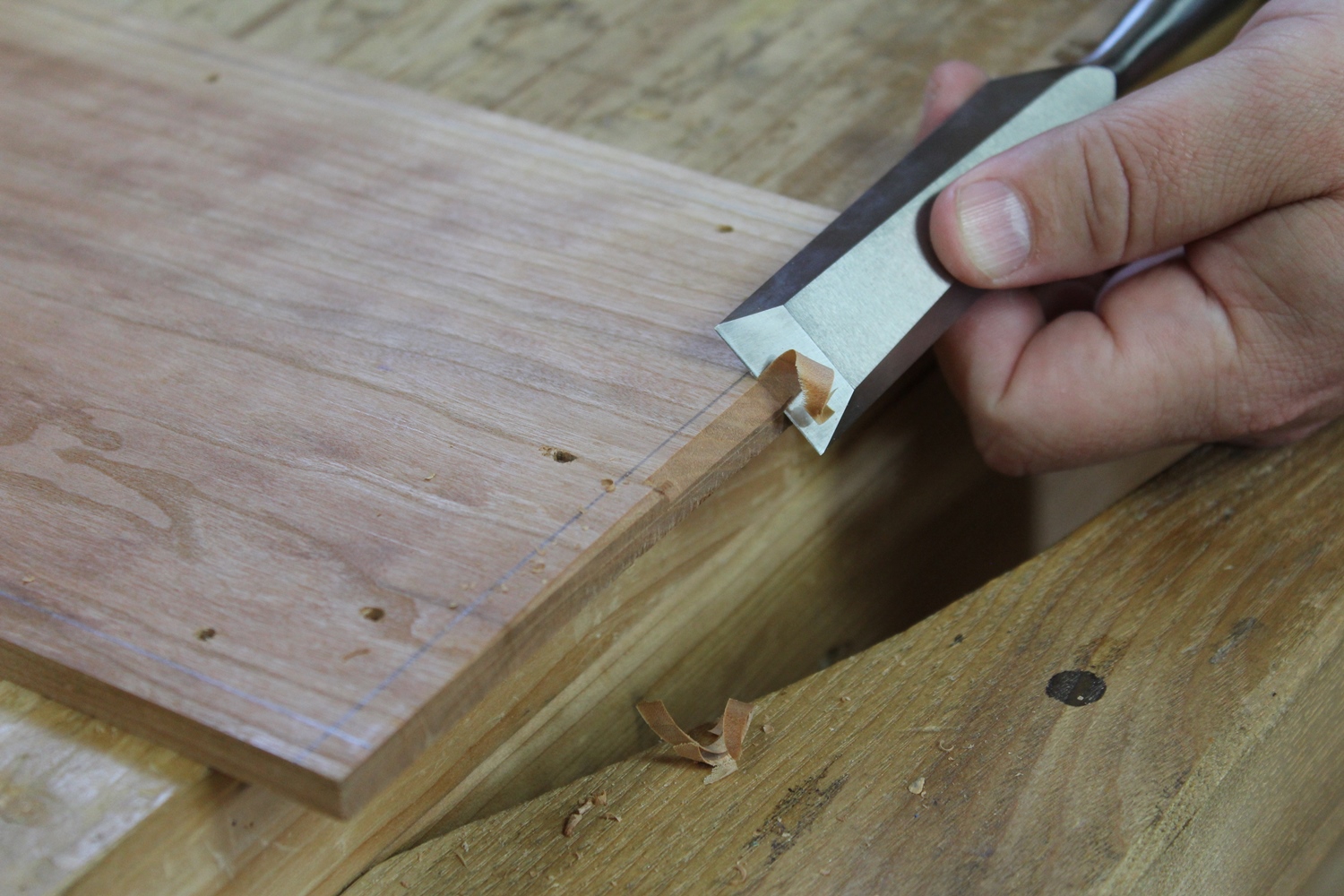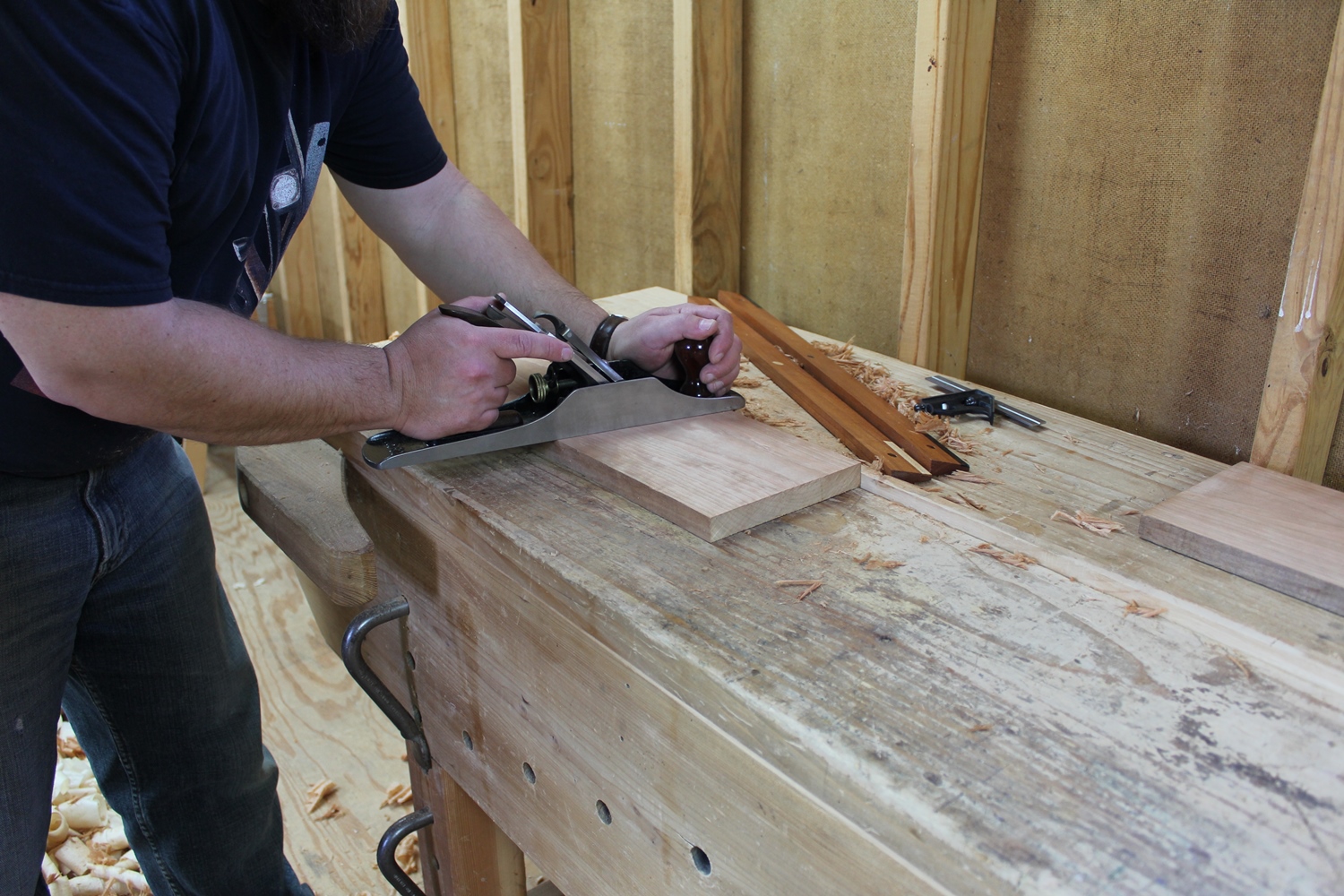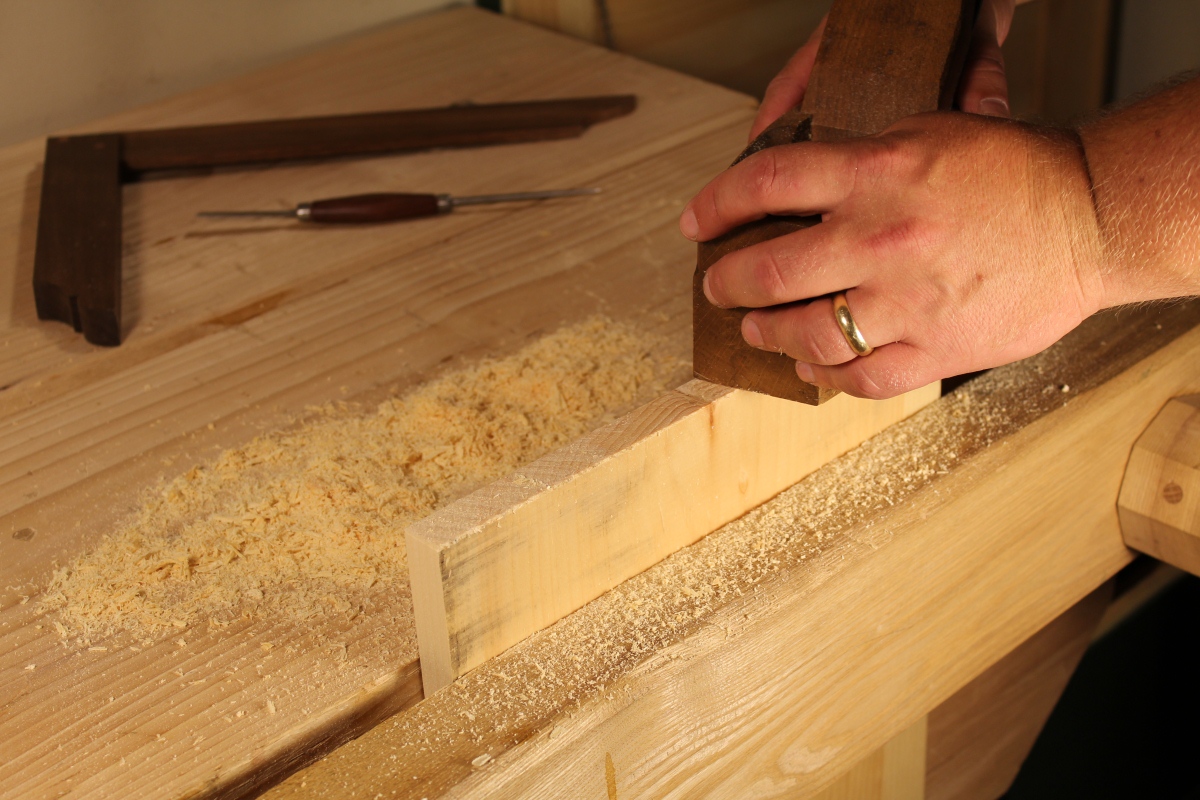
When Should You Stop Working and Sharpen?
There are plenty of articles in magazines, books, and all over the internet that will tell you how to sharpen a hand plane iron or a chisel. In fact, if you look long enough, you can probably find an article that will tell you how to use every different kind of sharpening medium, machine, technique, and regimen. But one of the questions most often asked by new woodworkers, and most often waffled on by experienced woodworkers in not HOW to sharpen but WHEN to sharpen.

I can’t count the number of times that this question has been posed to me, and I too have often waffled on the response. “It’s a feel thing” is a common answer. “When the tool gets harder to push” is another. But these are very subjective responses. For someone new to hand tools, they don’t provide all that much information. I mean a plane or chisel is going to be harder to push through oak than it is through poplar. Is this the result of sharpening or just the hardness of the wood? Regardless, if you’re like most woodworkers, you’re most likely not sharpening soon enough.

With chisels, it’s often a bit easier to determine that the tool may need to be sharpened by watching the wood itself. Yes, the tool will get harder to push, but if you’re chopping and not paring, the additional force required to move the tool through the material may not be noticed until the edge is really dull and maybe even chipped. If a tool’s edge goes this far it will need a trip to the grinder, not just a touch up on the stones, and this would be taking the edge too far. The goal would be to stop and sharpen before the edge gets this dull or damaged.
So with chisels, I tend not to focus on the effort to drive the tool, but rather, I observe the wood itself. Observing the wood being cut, and looking for fibers that are crushing, crumbling or tearing instead of being cut cleanly will give an indication that it’s time to stop and touch up the edge of the tool. You’ll find that in really hard, open grained woods like oak, and in really soft, spongy woods like white pine, you’ll need to touch up the edge more frequently than you will in tighter grained woods like cherry and maple.
When using hand planes, however, it can be a bit more difficult to tell that the edge may be ready for a touch up. In fact, even with the almost two decades of experience that I have using hand planes very regularly, I still will often use a blade for longer than I should. This can be because I’m being lazy and just want to get the job done, or because I’m really in the moment and not really paying attention to the additional downward pressure that I’ve gradually been applying to keep the blade in the cut. Nonetheless, knowing when to stop planing and re-hone the iron can be a challenge. With a hand plane, it really is a lot about feel, but if you pay attention, the tool will tell you that it’s not performing quite as well as it should.
There are a couple of signs to pay attention for when you’re using your planes. First, is the plane getting harder to push? Yes, I know this is very subjective, but it’s something you really have to pay attention to with a hand plane. If it started out cutting really easy, and after a little while you find yourself stopping to wax the sole much more frequently, the issue probably isn’t friction, it’s more likely a blade that is getting dull.

Second, do you find yourself needing to apply more downward pressure to keep the tool engaged in the cut? A sharp hand plane, properly set, will require little to no pressure down into the board in order to cut. The blade should engage and keep itself in the cut, if the board is relatively flat. As the blade begins to dull, however, it will tend to come out of the cut and you will find yourself pushing down on the plane harder to keep it cutting. When this starts to happen, you probably need to stop and sharpen soon.
Finally, as with the chisel, observe the surface of the wood itself. If you are planing the face or edge grain of the board, look for shiny burnishing of the surface. A really sharp blade will cleanly slice the fibers leaving a smooth but fairly dull looking surface behind. As the blade begins to dull, you will tend to observe more burnishing of the surface. This is the result of the blade rubbing more and slicing less, and also of the additional downward pressure being applied to keep the blade in the cut. Also, look for tearout starting to appear in areas that weren’t tearing out before. While this may indicate a subsurface grain change, it can also indicate a blade that is starting to get dull and not cutting cleanly. If you’re planing end grain, look for a rough surface being left by the tool instead of a clean, smooth surface. This is the result of some fibers not being cleanly cut but rather torn and is a sign that the blade needs sharpening.
So there are a few things you can look for, but knowing when to sharpen is really something that comes with experience using the tools with different types of woods and in different situations. So if you really want to know when to sharpen your tools, get out in your shop and use your tools. This is one subject where experience is really the best teacher.
Tag:Chisels, Hand Planes, Sharpening

2 Comments
Happy New Year, Bob – I sharpen rarely but strop frequently – it’s faster and quite remarkable how quickly it restores a sharp edge. I use a piece of leather and green compound; a power strop also works well.
The sharp plane blade actually pulls itself down into the cut, why the plane needs only light forward motion to keep it moving. I notice the duller blades requires force to be put down on the plane to get the iron to engage in the same fashion. Stropping a slightly dull blade can renew it enough to finish a few strokes, but nothing beats a freshly sharpened iron! Great video by the way, and I have watched that Paul Sellers video also – what a great demonstration.